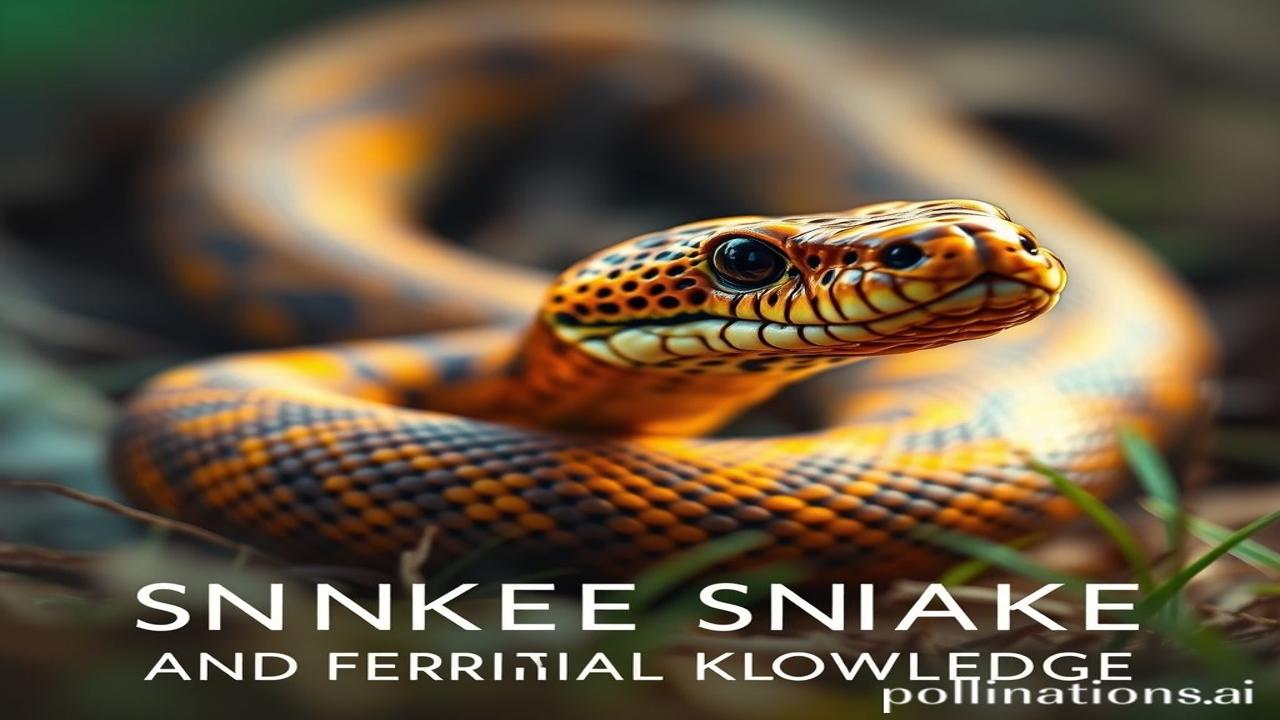Sssssshhh… Suno, Saanpon Ki Bhi Kahani Hai! (Listen Closely, Snakes Have Stories Too!)
Kabhi socha hai, jungle ki woh geheri khamoshi mein, saanpon ki sarsarahat kya kehti hai? (Have you ever thought, what does the rustling of snakes say in the deep silence of the jungle?) Waqt ki dhool mein chhupi, yeh kahani sirf darawani nahi hai, balki gyaan, aadar, aur prakriti se judne ki bhi hai. (Hidden in the dust of time, this story is not just scary, but also of knowledge, respect, and connecting with nature.) Let’s explore the fascinating world of snake conservation and the incredible traditional knowledge that surrounds them.
Nag Panchami Se Pehle: Historical & Cultural Context (Before Nag Panchami: Historical & Cultural Context)
Snakes. Just the word can send shivers down our spines. But in India, Nagraj (the snake king) isn’t just a creature to be feared. They’re revered, worshipped, and deeply intertwined with our culture. This relationship dates back thousands of years, appearing in ancient scriptures, mythology, and folk tales.
What is this connection? Snake worship, specifically, is deeply rooted in our understanding of nature’s cycles, fertility, protection, and even healing.
When and where did it originate? Evidence of snake worship can be found as far back as the Indus Valley Civilization (around 3300-1700 BCE). Seals depicting snake deities have been unearthed, showcasing its early significance. Over centuries, various dynasties like the Nagavanshis further solidified this reverence across India.
Why is it important? Snakes play a crucial role in our ecosystems, controlling rodent populations and maintaining ecological balance. Our ancestors understood this long before modern science confirmed it. Furthermore, the fear and respect they inspired often acted as natural protectors of sacred groves and water bodies. Yeh ek balance tha, ek prakriti ka chamatkar! (This was a balance, a miracle of nature!)
Zameeni Sach: Vaidya, Sapere, Aur Jungle Ka Jeevan (Ground Truth: Vaidyas, Snake Charmers, and Jungle Life)
Imagine a vaidya (traditional healer) in a remote village, carefully collecting herbs and observing the behavior of snakes. He knows that snake venom, when used correctly, can be a powerful medicine. He also understands the delicate balance of the forest and the importance of protecting snake habitats.
“Beta, saap toh Dharti Maa ki raksha karte hain,” (Son, snakes protect Mother Earth) he tells a young apprentice, “Unko na maro, unka aadar karo.” (Don’t kill them, respect them.)
Then, there’s the sapera (snake charmer). Once a common sight in villages and towns, they were often misunderstood. While some exploited snakes for entertainment, many possessed intricate knowledge of snake behavior, identifying different species, and knowing how to handle them safely.
“Aye, bhaiya! Dekho yeh kala nag,” (Hey brother! Look at this black cobra,) a sapera might call out, skillfully controlling the snake with his been (a wind instrument). But behind the spectacle, lies generations of knowledge passed down through families. Unke liye, yeh sirf profession nahi tha, yeh ek jeevan shaili thi. (For them, it wasn’t just a profession, it was a way of life.)
Dharohar Aur Pehchan: Snakes in Modern India (Heritage and Identity: Snakes in Modern India)
Even today, the echoes of this ancient relationship resonate in our rituals, art, and festivals. Nag Panchami, a festival dedicated to snake worship, is celebrated across India. Log naagon ko doodh pilate hain, puja karte hain, aur mannate mangte hain. (People offer milk to snakes, worship them, and make wishes.)
Think of the intricate snake motifs adorning ancient temples and sculptures. The Sheshnag on which Lord Vishnu rests, the kundalini shakti represented by a coiled serpent in yoga, and the Naga devatas worshipped across South India – these are all powerful symbols that connect us to our cultural heritage. Yeh Bharatiyata ka ek anmol hissa hai. (This is a priceless part of Indianness.)
Mazedar Tathya Ya Bhram-Bhanjak: Shocking Truths About Snakes (Fun Facts or Myth-Busters: Shocking Truths About Snakes)
Myth: Snakes drink milk.
Truth: Snakes are reptiles and cannot digest milk. Offering milk to snakes is actually harmful to them. It’s a well-intentioned, but misguided tradition. The idea likely stemmed from the association of milk with fertility and prosperity, and offering it to snakes was seen as a way to appease them and receive blessings.
Another Fact: Did you know that India is home to over 300 species of snakes, but only about 60 are venomous? Darrne ki baat nahi, samjhne ki baat hai! (It’s not about being scared, it’s about understanding!)
Drishya Aur Bhavnayen: Smells, Sounds, and Feelings (Visuals and Emotions: Smells, Sounds, and Feelings)
Imagine the humid air of a monsoon forest, thick with the scent of wet earth and decaying leaves. The rhythmic chirping of crickets is punctuated by the occasional rustle in the undergrowth. Aapko dharti ki khushboo aati hai? (Can you smell the earth?)
Touch the cool, smooth stone of an ancient temple dedicated to Nag Devata. Feel the weight of centuries of devotion etched into its walls. Hear the chanting of mantras and the rhythmic beat of drums during a Nag Panchami celebration. Kya aapko wohi shanti mehsoos hoti hai jo humare purvajon ne ki thi? (Can you feel the same peace that our ancestors felt?)
Antim Vichar Ya Uddharan: A Call to Action (Closing Thought or Quote: A Call to Action)
Today, snake populations are threatened by habitat loss, hunting, and misconceptions. It’s crucial that we revive and preserve the traditional knowledge surrounding these fascinating creatures and promote responsible conservation efforts. * हमें अपनी विरासत को समझना होगा, और प्रकृति के साथ तालमेल बिठाकर जीना होगा |* (We must understand our heritage and live in harmony with nature.)
Let’s remember this shloka:
“Sarve Bhavantu Sukhinah, Sarve Santu Niramayah, Sarve Bhadrani Pashyantu, Maa Kashcid Dukha Bhag Bhavet.”
(May all be happy, May all be free from illness, May all see what is auspicious, May no one suffer.)
This ancient wisdom reminds us to extend our compassion and respect to all living beings, including the often-misunderstood snake.
